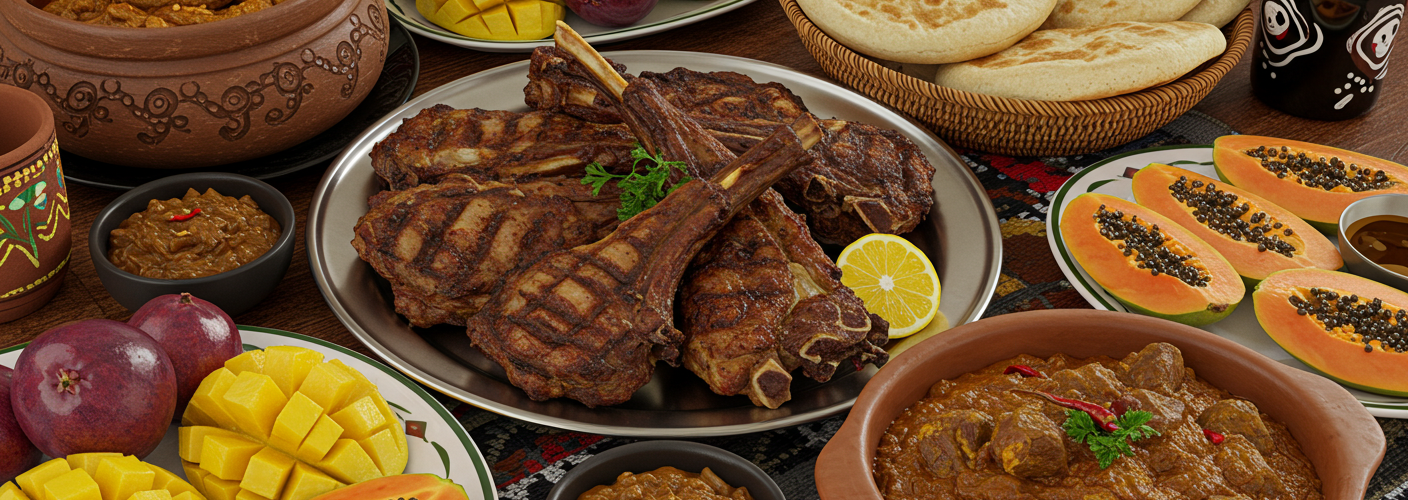Somalia, a nation located in the Horn of Africa, boasts a rich culinary heritage shaped by its unique geographic position and diverse cultural influences. The country’s cuisine reflects a blend of Arab, Indian, Italian, and indigenous African traditions, resulting in a colorful palette of flavors that are both aromatic and hearty. For food enthusiasts and curious travelers alike, Somali food offers an array of dishes that are as fascinating as they are delicious.
At the heart of Somali cuisine is the staple food, which includes an assortment of grains, vegetables, and protein sources. One of the most prominent staples is bariis, a fragrant rice often prepared with spices and served alongside meat dishes. The rice is commonly cooked with cinnamon, cardamom, and cloves, providing a comforting base that complements the robust flavors found in the meat.
Sambusas are another popular treat you shouldn’t miss. These savory pastries, filled with various ingredients like spiced meat, lentils, or vegetables, are akin to the Indian samosa and are a staple at Somali gatherings, especially during Ramadan. They are typically deep-fried until golden and crispy and are a favorite street food enjoyed by many.
For a quintessential Somali dish, one must try canjeero, a type of pancake made from fermented dough. It is often enjoyed with different toppings, including honey, ghee, or savory stews. Canjeero is a versatile item that can be served during breakfast or as a part of any meal throughout the day, showcasing its significance in Somali eating habits.
When it comes to meat, suqaar is among the most beloved dishes. Typically made using diced beef or goat meat sautéed with onions, peppers, and spices, it is often served with rice or flatbreads. The rich flavors and tender texture of the meat make it a comforting choice for family meals or communal gatherings.
Lahooh, a spongy flatbread, is another staple in Somali households. Its texture is soft and porous, making it perfect for soaking up sauces from various dishes. Lahooh is often accompanied by a stewed meat or vegetable side, creating a satisfying and wholesome meal that is enjoyed by all ages.
Spices play a central role in Somali cooking, giving dishes their distinctive taste. Berbere, a spice mix that combines chili peppers with other spices, adds warmth and complexity to many Somali recipes. Additionally, xawaash, a spice blend featuring cumin, coriander, and cardamom, is integral to many stews and rice dishes, offering a delightful aromatic experience.
Somali cuisine is not just about the food; it is also about the cultural practices surrounding meals. Sharing food is a cherished tradition, often enjoyed communally from a large platter. Eating with the right hand is customary, symbolizing togetherness and respect. Whether during special occasions or daily meals, the act of breaking bread is a significant aspect of Somali hospitality.
In conclusion, Somali food is a vibrant celebration of flavors, reflecting the history and traditions of its people. With its variety of dishes ranging from comforting spices to aromatic rice and savory pastries, anyone interested in exploring new cuisines should definitely delve into the world of Somali culinary delights. Whether you’re at a bustling market or a family home, the experience of enjoying Somali food is undoubtedly one to remember.




Add comment